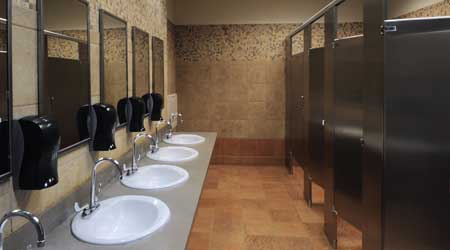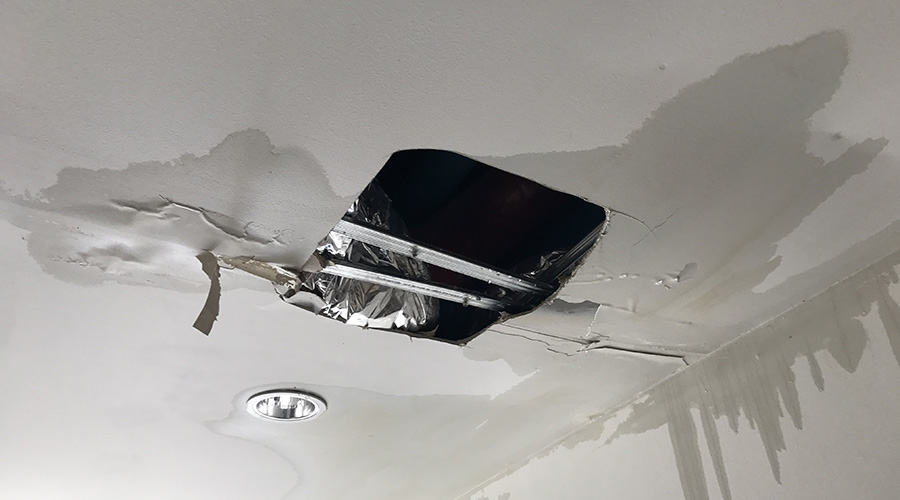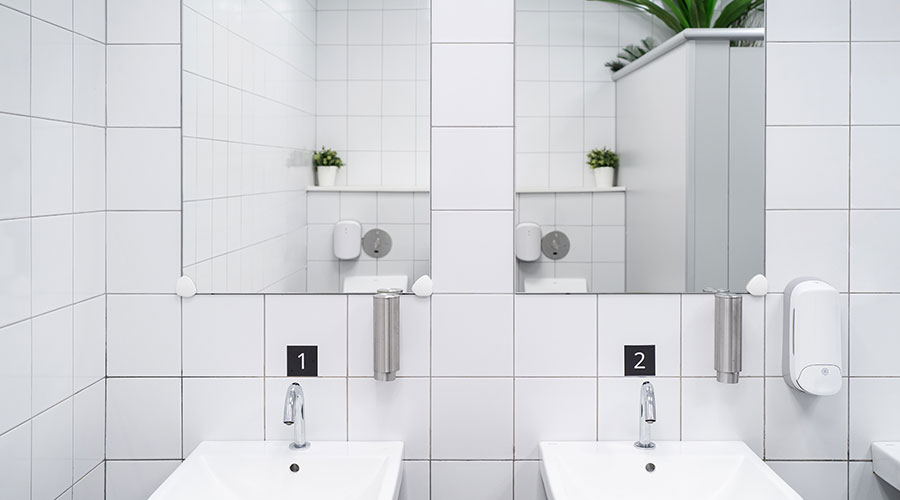 By discussing water use, traffic levels, lighting, and hygiene during planning, managers can help project designers develop effective upgrade plans.
By discussing water use, traffic levels, lighting, and hygiene during planning, managers can help project designers develop effective upgrade plans.Plumbing Renovations That Deliver
Careful planning that includes setting clear goals helps managers produce successful restroom upgrades
Restrooms in institutional and commercial facilities have long service lives, — 20 years or more, typically. But no matter how well they are maintained, eventually they require renovation.
The success of renovations of restrooms and plumbing systems depends largely on the planning process by managers before the renovation process even begins. Ultimately, the difference between a successful and an unsuccessful renovation traces back to the level of detail found in that planning process. Understanding the way details impact the long-term performance and life of those facilities will assist managers in successful planning.
First but not least
The restroom renovation planning process involves much more than simply picking finishes and fixtures. What makes these projects particularly challenging is finding the balance between controlling first costs and ensuring long-term performance. Maintenance and engineering managers must work a budget with during the renovation process, but they also are under pressure to reduce operating costs over the life of the restrooms.
The problem? Most steps managers can take to reduce first costs will result in decreased service lives of restroom components, increased operating costs, increased maintenance costs, and maybe all three.
If managers are to deliver successful renovations, they first need to make those setting the renovation budget understand that over the service life of a typical restroom, energy, maintenance, and operating costs will greatly exceed the renovation costs. First costs are important but should not be the driving force behind making restroom renovation decisions.
Designing for success
Before managers can start planning restroom renovations, they need to identify the specific reasons they are undertaking the renovation. Specific goals will give designers better guidance in developing the new design.
For example, a dirty restroom is one of the most common reasons given for undertaking a renovation project. Unfortunately, it tells designers little. The restroom could appear dirty because the lighting is insufficient.
Or the surfaces installed tend to show water spots or have a filmy finish. Or the floor does not slope enough to allow water to rapidly drain. Or partitions are dull and corroded. Unless managers make designers aware of these concerns before the planning process starts, chances are that some of the issues will still exist in the renovated restroom.
Managers need to remember that typically, multiple goals drive a renovation project. Appearance is one of the most common renovation goals, but the projects also can give managers opportunities to improve operations in other ways. Changes can cut energy and cleaning costs, reduce water use, minimize ongoing maintenance requirements and curtail damage from vandalism.
To succeed, managers must clearly identify each goal they want to achieve with the renovation and make certain designers understand those goals. To do this, managers must identify the trouble spots with their current restrooms and understand strategies to correct the problem by implementing specific features in the renovation.
Related Topics:













